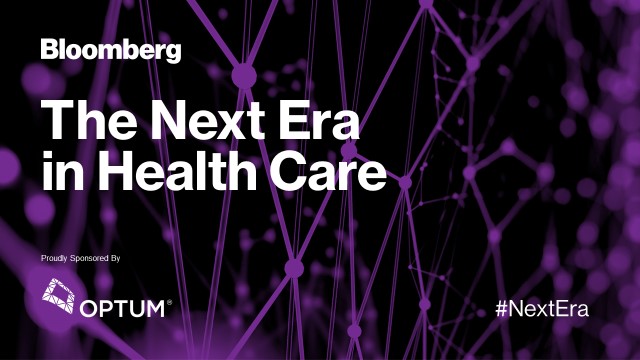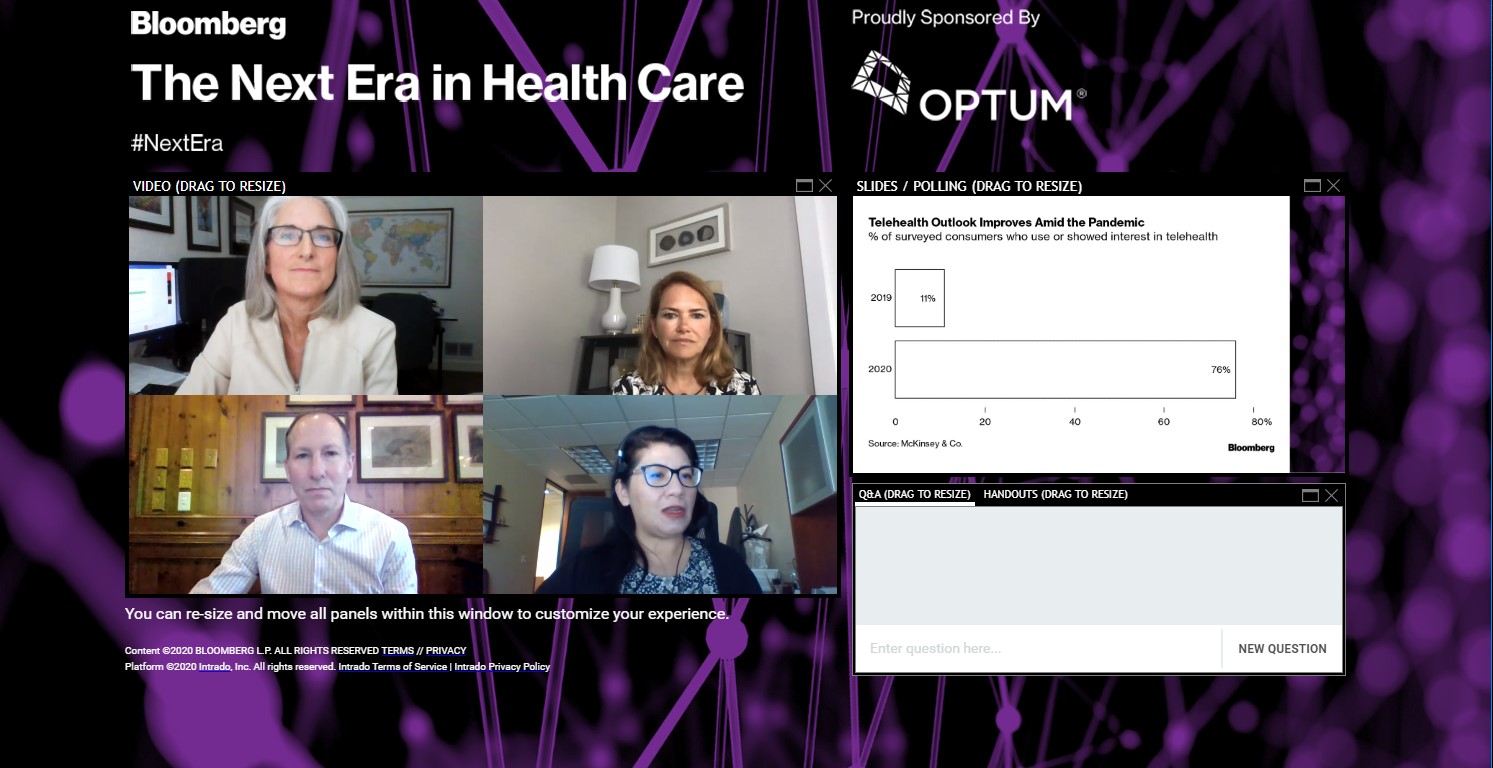By Shartia Brantley, Senior Editor, Bloomberg

At Bloomberg’s June 25th virtual briefing, The Next Era in Health Care, Bloomberg reporters Michelle Cortez and Emma Court spoke to leaders on the frontlines of government, policy, business and medicine to discuss COVID-19’s impact on health care delivery and the innovative solutions deployed during this pandemic. We also discussed the challenges that may hinder the adoption of new care models. Below are the key insights.
Telemedicine in the Spotlight
Jason Gorevic, Teladoc Health Chief Executive Officer said his firm has been able to on board thousands of physicians onto their virtual platform. “We had providers in the market who were all of a sudden forced to embrace virtual care as a means of survival quite frankly economically and a way to connect with their patients.” Services ranging from pre and post-surgical visits to oncology follow ups to telepsych are offered, he said.
Impact of Telemedicine on Clinical Trials
Telemedicine plays a pivotal role in clinical trials, according to Dr. Amy Abernethy, Principal Deputy Commissioner of Food and Drugs, FDA. She said telemedicine allows participants to stay home and interact with the clinical teams and allows the clinicians to keep studying medicine during the pandemic.
Role of Telemedicine on Vulnerable and Remote Communities
Vulnerable populations such as communities of color and seniors may benefit greatly from telemedicine, but access can be a hurdle. “These populations may not have robust enough connectivity or required devices such as a laptop or smartphone,” warned Mei Kwong, Executive Director, Center for Connected Health Policy. As telemedicine gets incorporated into our health system she cautioned, “How do we ensure no one gets left behind?”

Leveraging Technology for Improved Patient Health Outcomes
COVID-19 highlighted the need for data, analytics and predictive modeling to improve patient outcomes, according to Dr. Girish Nadkarni, Clinical Director, Hasso Plattner Institute for Digital Health and Co-Chair, Mount Sinai COVID Informatics Center. Consolidating data was critical to learn about the new disease, he said. “We decided to aggregate data from around the health care system in order to have all the data of patients in one place.”
Challenges Remain with Interoperability
The gaps in terms of the basic ability to move data and information where and when it is needed was exacerbated during COVID-19, said Mari Greenberger, Senior Director of Inforamtics, HIMSS. “Folks who should be tending to patients who are sick instead are working on what way I can get this information to fulfill some need,” she said. Interoperability is not going away as a challenge, but she remained optimistic. “There’s been a lot of movement in this area to try to get that interoperability quilt if you will, that patchwork together and be more cohesive,” she urged.
——————————
Instagram: @BloombergLive
LinkedIn: Bloomberg Live
Twitter: @BloombergLive
Interested in more Bloomberg Live virtual events? Sign up here to get alerts.
——————————
